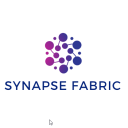In the world of web development, two prominent paradigms have emerged for building APIs: Representational State Transfer (REST) and GraphQL. Each approach has its strengths and weaknesses, catering to different use cases and development philosophies. In this article, we’ll delve into the differences between GraphQL vs. REST, highlighting their respective advantages and drawbacks. We’ll also provide a comparison table to help you make an informed decision based on your project’s requirements.
GraphQL: A New Paradigm
GraphQL, introduced by Facebook in 2015, is a query language for APIs that enables clients to request only the data they need, minimizing over-fetching or under-fetching of data. Instead of multiple endpoints with fixed responses, GraphQL offers a single endpoint that allows clients to shape the structure of the response according to their specific needs. This flexibility has led to its popularity in scenarios where data requirements are diverse and change frequently.
REST: The Traditional Approach
REST, on the other hand, is a well-established architectural style that uses a set of principles to design networked applications. It revolves around resources (usually represented by URLs) and standard HTTP methods like GET, POST, PUT, and DELETE. REST APIs are known for their simplicity and ease of caching, making them suitable for scenarios with straightforward data structures and consistent endpoints.
https://synapsefabric.com/2023/08/25/quarkus-vs-ktor-a-comprehensive-comparison-for-java-and-kotlin-development/
Comparison Table: GraphQL vs. REST
| Aspect | GraphQL | REST |
|---|---|---|
| Data Fetching | Precise data retrieval with queries | Fixed data retrieval with endpoints |
| Over-fetching | Eliminates over-fetching of data | Prone to over-fetching |
| Under-fetching | Avoids under-fetching through queries | Multiple requests may lead to under-fetching |
| Response Size | Client defines response structure | Fixed response structure |
| Versioning | No versioning issues due to flexibility | May require versioning as APIs evolve |
| Network Efficiency | Reduced number of requests | Caching benefits due to fixed endpoints |
| Development Speed | Rapid development due to flexibility | Can be slower due to rigid endpoints |
| Complexity | More complex for server implementation | Simpler server implementation |
| Discoverability | Self-documenting through introspection | Requires external documentation |
| Adoption | Gaining popularity, active development | Widely adopted, established |
Which Approach Should You Choose?
The choice between GraphQL and REST depends on your project’s specific needs and constraints. Here are some guidelines to consider:
- Choose GraphQL If:
- Your application has diverse data requirements that change frequently.
- You want to avoid over-fetching or under-fetching of data.
- A flexible response structure is crucial.
- You value self-documenting APIs.
https://synapsefabric.com/2023/10/05/grpc-vs-graphql-choosing-the-right-data-communication-protocol/
- Choose REST If:
- Your application has a well-defined, consistent data structure.
- Network efficiency and caching are critical.
- Simplicity in API design is a priority.
- The project involves multiple stakeholders familiar with REST.
In the debate of GraphQL vs. REST, there’s no one-size-fits-all answer. Both paradigms have their own merits and are suited to different scenarios. GraphQL’s flexibility caters to projects with dynamic data requirements, while REST’s simplicity and caching benefits make it ideal for more straightforward applications. By understanding the strengths and weaknesses of each approach, you can make an informed decision that aligns with your project’s goals and constraints.
Remember that the choice you make today doesn’t have to be set in stone. As technology continues to evolve, staying adaptable to new solutions will ensure your application’s long-term success.





